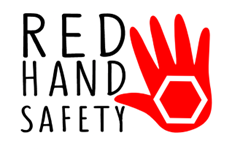Comprehensive Site Visit Procedure in the Oil and Gas Industry: Ensuring Safety Compliance and Best Practices
Site visits in the oil and gas industry play a pivotal role in ensuring the safety, compliance, and efficiency of daily operations. A standard site visit involves an unannounced safety inspection aimed at capturing a snapshot of daily activities while observing compliance with safety policies and practices. This procedure outlines the steps involved in conducting such visits, focusing on coaching employees, engaging in conversations, and evaluating various safety aspects, including PPE, excavation permits, LOTO practices, fall protection, and equipment operations.
1. Pre-Visit Preparation:
– Identify the site to be visited based on a predetermined schedule or risk assessment criteria.
– Review previous visit reports, incident records, and compliance data to tailor the visit focus areas.
– Prepare necessary documentation, including site audit forms, safety checklists, and communication materials.
– Coordinate with site management to ensure access and cooperation during the visit.
– Arrange for transportation and necessary safety equipment for the visiting team.
2. Arrival and Site Orientation:
– Upon arrival, meet with site management to confirm the purpose and objectives of the visit.
– Conduct a brief site orientation to familiarize the visiting team with the layout, potential hazards, and emergency procedures.
– Introduce the visiting team to key personnel, including safety coordinators, supervisors, and workers.
– Emphasize the importance of safety compliance and encourage open communication throughout the visit.
3. Observation and Engagement:
– Begin the observation process by walking through the site and observing ongoing activities.
– Engage in conversations with employees to understand their roles, tasks, and safety practices.
– Provide coaching and guidance on safety best practices, addressing any observed deviations or deficiencies.
– Encourage workers to raise safety concerns or suggestions for improvement.
– Demonstrate leadership support for safety by actively participating in safety discussions and activities.
4. Site Audit and Documentation:
– Use the site audit form to systematically evaluate various safety aspects, including:
– Personal Protective Equipment (PPE) usage and compliance.
– Excavation permits and safe work practices in excavation areas.
– Lockout-Tagout (LOTO) procedures for equipment maintenance and servicing.
– Fall protection measures, including guardrails, harnesses, and anchor points.
– Walking-working surfaces for hazards such as slips, trips, and falls.
– Availability, condition, and proper use of fire extinguishers.
– Material Safety Data Sheets (SDS) accessibility and awareness.
– Ladder safety practices, including inspection and proper usage.
– Safe operation of equipment, including vehicles, machinery, and tools.
5. Data Collection and Analysis:
– Document observations, findings, and recommendations in the site audit form in real-time.
– Capture photographs or videos to provide visual evidence of observed conditions or practices.
– Record any non-compliance issues, safety hazards, or areas for improvement.
– Analyze data collected during the visit to identify trends, patterns, and recurring issues.
– Compare current findings with historical data to track progress and measure improvement over time.
6. Feedback and Follow-Up:
– Conduct a debriefing session with site management and key stakeholders to discuss findings and recommendations.
– Provide immediate feedback to employees on observed safety practices, reinforcing positive behaviors and addressing concerns.
– Collaborate with site management to develop corrective action plans for addressing identified deficiencies.
– Follow up with site management to ensure timely implementation of corrective actions and monitor progress.
– Communicate visit findings, lessons learned, and best practices across the organization to promote continuous improvement.
Conclusion:
Standard site visits in the oil and gas industry serve as essential tools for promoting safety, compliance, and best practices. By conducting unannounced safety inspections, engaging with employees, and evaluating various safety aspects, organizations can proactively identify and address potential hazards, minimize risks, and enhance overall safety performance. Through effective preparation, observation, documentation, and follow-up, site visits contribute to creating a culture of safety excellence and continuous improvement within the industry.



